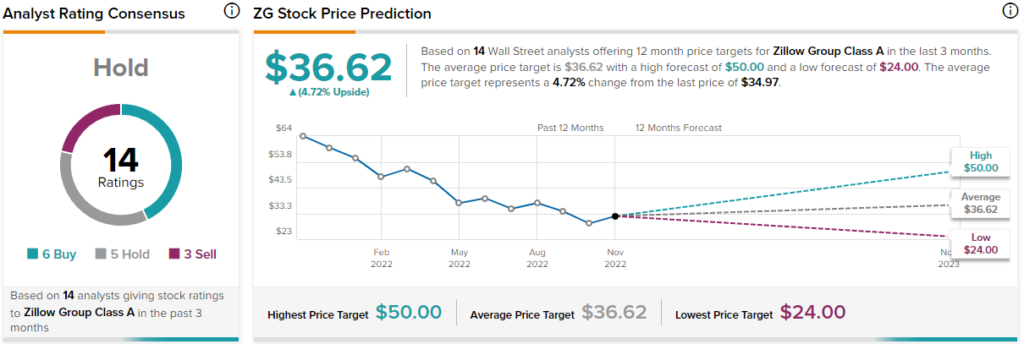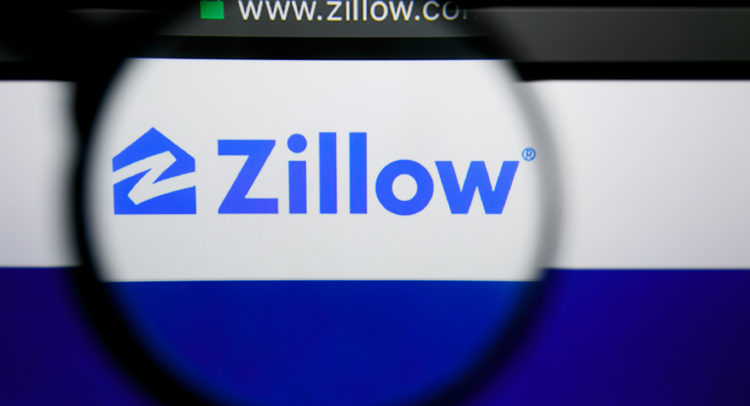Zillow (NASDAQ:ZG) is one of the places that homebuyers increasingly turn to to find the property of their dreams. Yet, with the housing market starting to slump, Zillow finds its own stock increasing in volatility. Zillow shares were initially up today but are now down 5%. The company offered up a distressing new fact as part of a recent study. According to Zillow Home Loans, home buyers aren’t being particularly careful when it comes to shopping for a mortgage – a painful fact for a company that has an entire arm focused on home lending. It’s one more distressing fact in a growing body of distressing facts, and it’s enough to leave me bearish on Zillow.
In fact, home buyers actually spent more time shopping for vehicles than they did shopping for mortgage lenders. They also spent more time shopping for vacation options.
The study further noted that 72% of potential home buyers haven’t shopped around for a mortgage, nor do they plan to. Finally, the study notes that, by failing to check the various options around, home buyers may ultimately pay thousands, even tens of thousands, more over the course of their mortgage.
Is Zillow Stock a Good Buy, According to Analysts?
Turning to Wall Street, Zillow has a Hold consensus rating. That’s based on six Buys, five Holds, and three Sells assigned in the past three months. The average Zillow price target of $36.62 implies 4.7% upside potential. Analyst price targets range from a low of $24 per share to a high of $50 per share.

Currently, Zillow has a 3 out of 10 Smart Score on TipRanks, suggesting a good chance that Zillow will ultimately underperform the broader market.
Insider trading at Zillow has turned very negative as well. Insiders sold $2.2 million worth of shares in the last three months. The last Zillow insider who bought stock was three months ago. In the meantime, every other transaction has been a Sell.

The numbers from Zillow’s financials aren’t helping matters any. Currently, the company is forecast to see a loss of $0.02 per share in the next quarter, and the company’s P/E ratio is negative. Specifically, its P/E ratio stands at -31.4.
Reasons for this abound; the company’s revenue has been in decline for the last two quarters, going from $4.26 billion in March 2022 to $1.01 billion in June 2022. September 2022, meanwhile, saw the company hit $483 million in revenue. Gross profit and EBITDA figures have seen similar declines.
While the company incrementally reduced its debt load, its cash holdings and total assets have been in decline as well.
No One Wants What Zillow is Selling
The bad news only keeps mounting for Zillow. While home prices are still rising, they’re rising at a slower rate than normal. A Bankrate study found that a single-family median home price is up 8.6% against this time last year. Last quarter, prices were up 14.2% against the same time the previous year.
While clearly still elevated, it’s equally clear that prices are starting to backtrack. Small wonder, too; the Federal Reserve has been raising interest rates on a tear for the last eight months, hiking interest rates six times in that period. The base rate went from 0.25% to 4% in that time span.
Home prices are starting to drop, but the cost of buying that home is rising at the same time. Yet, despite this, Zillow’s own studies find that customers aren’t particularly interested in shopping around for better rates, saving themselves potentially large amounts of money. That’s a disturbing dichotomy and suggests that the problem may ultimately be Zillow itself.
In fact, recent reports make it clear: home sales rates have fallen for the last nine months. Between the skyrocketing inflation rates on food and fuel and the clear decline in home sales, it may be that no one’s shopping for mortgage rates because no one’s shopping for homes.
Conclusion: A Bad Day Coming for Zillow
Regardless of the ultimate cause, it’s clear that people are turning less to Zillow. Whether it’s to buy a home or to find a mortgage to pay for that home, Zillow’s services are less valuable now than they were months prior. That won’t help Zillow’s share price or its declining revenue rates. That’s why I’m bearish on Zillow. It’s going to be a bad season for the company until prices—and buying rates—start to normalize. While that bad season is in play, buying in on Zillow looks like a very bad idea.









